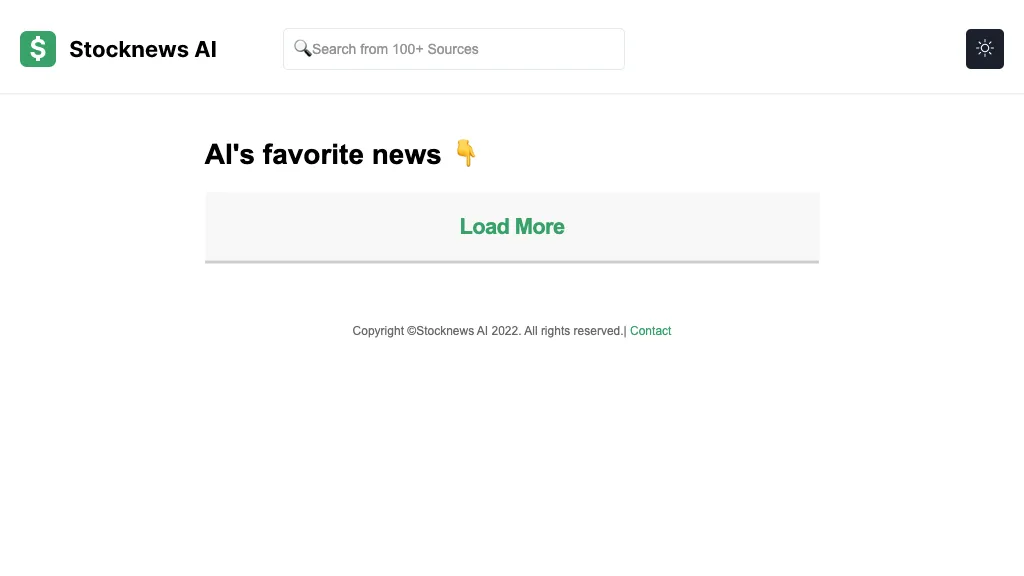20 Pro Ideas On Deciding On AI Stock Picker Platform Sites
20 Pro Ideas On Deciding On AI Stock Picker Platform Sites
Blog Article
Top 10 Tips To Assess The Strategy Customization Of Ai Trading Platforms
Strategy customization is a crucial characteristic of AI trading platforms that predict and analyze stocks which allows traders to customize the platform according to their specific trading goals as well as their risk tolerance and market conditions. A platform that has a range of customization features will enhance your trading. Here are 10 tips to evaluate the customizability of the platforms.
1. Evaluate Pre-Built Strategy Templates
Many templates. Find out if the platform has a wide range of strategies pre-built for different trading types (e.g. swing trading, day trading, or long-term investing).
User-friendliness: Consider the ease with which you can use and alter these templates to meet your needs.
Performance history: Determine whether the platform offers historical performance information for the pre-built strategies.
2. Examine Custom Strategy Creation
Drag-and-drop tools: Choose platforms that have drag-and-drop interfaces that permit you to quickly create customized strategies.
Find out about coding options. For advanced users, it may be necessary to check whether the platform provides custom-made coding.
Flexibility - Make sure that the platform you choose allows you to define rules for entry and exit, parameters for risk management, as well as other important aspects of your strategy.
3. Check for Backtesting Capabilities
Historical data: Make sure that the platform provides sufficient historical data to test your strategies.
Customizable parameters - Ensure that you have the ability to change parameters (e.g. timeframes, indicator) when testing backtests.
Performance metrics: Find out if the platform includes precise performance metrics for example, win rate (e.g. Sharpe ratio) drawdown, win rate, and other metrics for strategies that have been back-tested.
4. Evaluate Real-Time Strategy Testing
Simulation or paper trading Make sure the platform supports paper trading modes that allow you to try out trading strategies in real time and without risking money.
Live testing - See if you can test strategies using small amounts to see how they work.
Real-time adjustments - Determine whether you can adjust your strategies in real time in response to market conditions.
5. Evaluate the level of integration based on technological indicators
Verify if there's an indicator library.
Custom indicators - Make sure you can make or import your own custom indicators.
Make sure the platform allows you to combine several indicators into complex strategies.
6. Check for Risk Management Tools
Stop-loss/take-profit: Ensure the platform allows you to set stop-loss and take-profit levels within your strategies.
Size of the position: Determine if you are able to establish rules for sizing positions (e.g. the amount that is fixed or a percentage of portfolio) to help manage the risk.
Risk-reward: Find out if your platform lets you set risk-reward for each strategy or trade.
7. Evaluate Multi-Asset Strategy Support
Asset Classes: Check that the platform supports strategies from multiple asset classes (e.g. ETFs, Options, Forex and Stocks).
Strategies that cross assets: You could develop strategies that incorporate different asset classes (e.g. pair trading, hedges).
Market coverage. Make sure the platform covers the markets that you are looking to invest in (e.g. US international, copyright).
8. Evaluate Automation and Execution
Automated trading. Check if the platform allows automated execution, based on previously defined strategies.
Types of orders: Make sure that the platform can execute different types of orders including market, limit and stop.
The Latency Checker: Ensure that the platform allows for transactions to be completed with minimal delay. This is crucial for high-frequency strategies.
9. Take a look at the Strategy Optimization Tools
Parameter optimization: Ensure the platform provides tools to optimize the parameters of your strategy (e.g. grid search and genetic algorithm).
Integration of machine learning: Check if the platform integrates machine learning to improve and optimize strategies.
Scenario Analysis: Find out if the platform supports testing strategies across different markets (e.g. bull bear, bear, volatile).
Review Community Feedback and User Feedback
Feedback from users is essential to understand the effectiveness of an application.
Forums for community members: Find out if there's an active community of users who discuss and share strategies.
Support resources: Check that the platform has tutorials, documentation, and webinars to help users create and implementing strategies.
Bonus Tips
Trial period for free: You are able to try out the customizable options of the platform using a an online demo or a trial period for free.
Scalability: Make sure the platform you choose to use can manage complex strategies that change when you trade.
Support for customers: Find out whether the platform is able to provide support on strategy-related issues and concerns.
By following these tips, you can effectively assess the capabilities to customize strategies of AI trading platforms that predict and analyze stocks Be sure to select a platform that aligns with your goals in trading and allows you to implement and refine your strategies effectively. A platform with robust customization capabilities will allow you to be flexible to changing market conditions and improve the efficiency of your trading. Check out the best investment ai blog for website recommendations including ai investing platform, ai investment platform, ai stock picker, ai investing platform, using ai to trade stocks, investment ai, ai chart analysis, ai for investment, using ai to trade stocks, ai for stock predictions and more.
Top 10 Tips When Assessing The Ai Trading Platforms' Educational Resources
Assessing the educational resources provided by AI-driven stock prediction systems and trading platforms is essential for those who use them to learn how to make the most of the platform, interpret results, and make educated trading decision. These are the top 10 tips to assess the quality and usefulness of these sources:
1. Complete Tutorials and Guides
Tip: Make sure the platform offers tutorials and user guides geared at beginners and advanced users.
Why: Clear instructions will assist users to navigate and understand the platform.
2. Webinars with video demonstrations
You may also search for webinars, live training sessions or videos of demonstrations.
Why visual media and interactivity makes it easier to comprehend difficult concepts.
3. Glossary
Tips. Make sure your platform comes with a glossary that defines the most important AI- and financial terms.
Why? It helps novice users to understand the language of the platform, particularly beginners.
4. Case Studies and Real-World Examples
Tips: Check whether the platform offers case studies or examples of how the AI models have been applied in real-world scenarios.
What's the reason? Examples of the capabilities of the platform and its applications are offered to help users understand the platform's capabilities.
5. Interactive Learning Tools
Check out interactive tools, such as simulators, quizzes and Sandboxes.
Why: Interactive tools are a great way to learn and test your skills without risking cash.
6. Updated content
If you are unsure, check to see the educational materials are constantly updated in response to changes in trends, features, or rules.
Why: Outdated info can lead you to make misunderstandings and make incorrect use of.
7. Community Forums and Support
Find active support forums and forums where you can ask questions or share your knowledge.
Why Expert advice and support from peers can improve learning and solve problems.
8. Programs of Accreditation and Certification
Find out whether there are any certification programs or training courses that are accredited provided by the platform.
What is the reason? Recognition of formality will increase trust and inspire learners to continue their learning.
9. Accessibility and user-friendliness
Tip: Check how easily the accessibility and ease of use of educational sources are.
The reason: Access to the internet is easy and ensures that learners can study at their own speed and at their own convenience.
10. Feedback Mechanism for Educational Content
Tip: Check if the platform allows users to submit feedback about the educational material.
What is the reason? Feedback from users is important for improving the quality of resources.
Tips for learning: Make use of various learning formats
To meet the needs of different learners Make sure that the platform is able to accommodate different preferences. a variety learning formats.
By thoroughly assessing these aspects and evaluating them, you will be able to decide if the AI trading and stock prediction platform has a robust education component to help you realize its potential and make informed trading choices. View the top web site for ai stock trader for website examples including ai stock trader, investing with ai, stock predictor, ai stock analysis, stocks ai, ai stock analysis, stock predictor, best ai penny stocks, how to use ai for stock trading, stock trading ai and more.